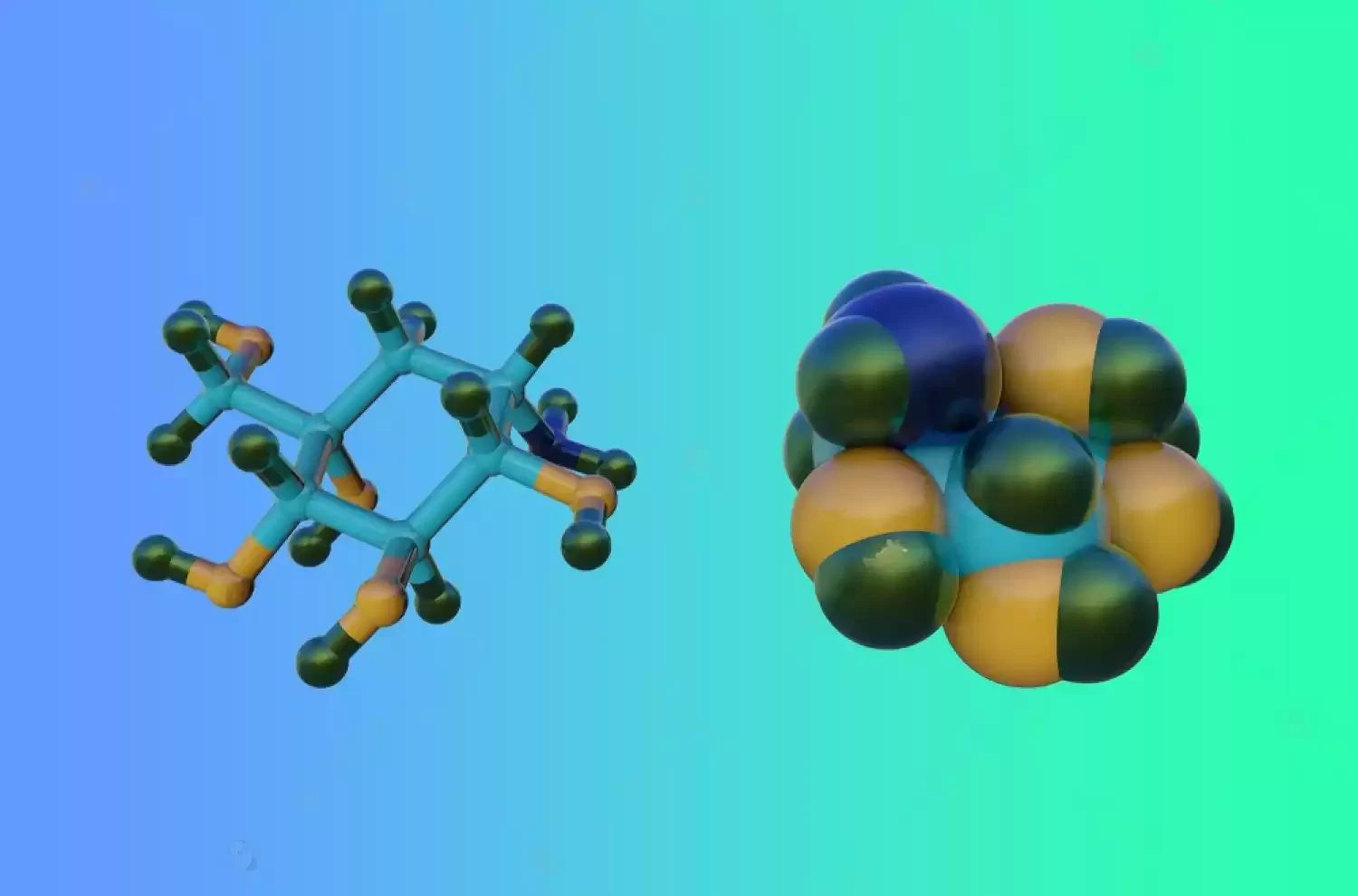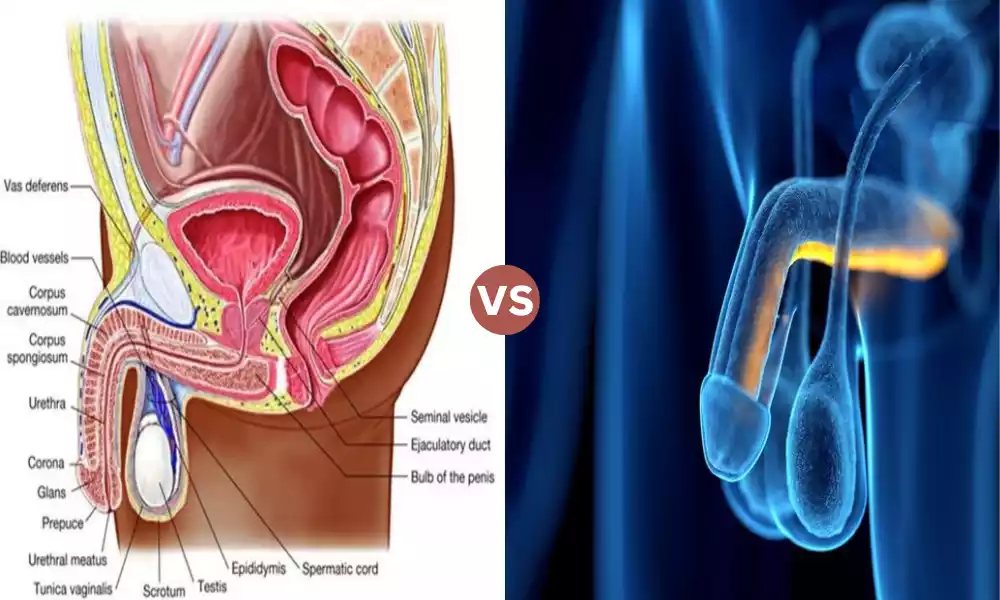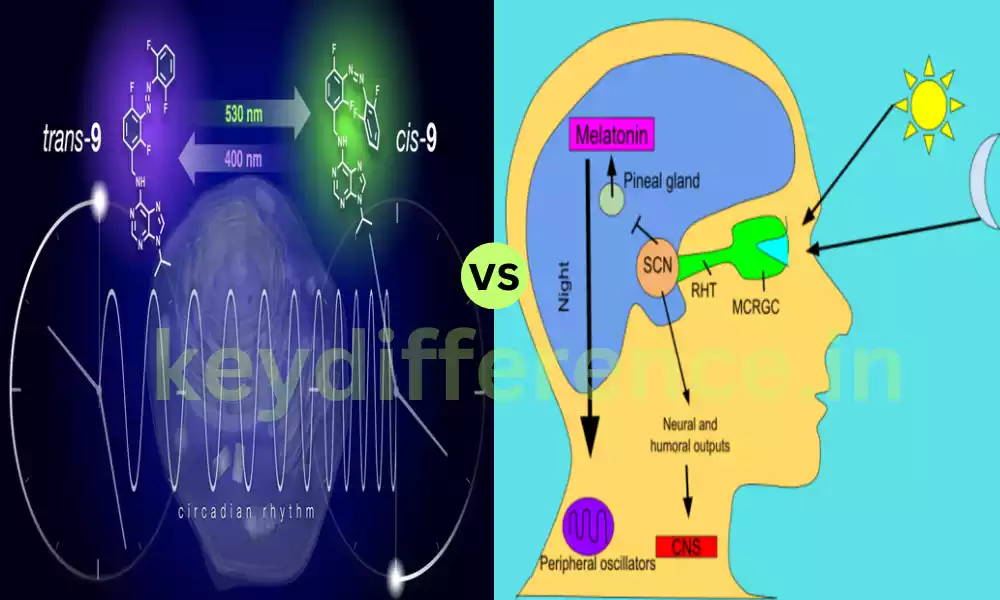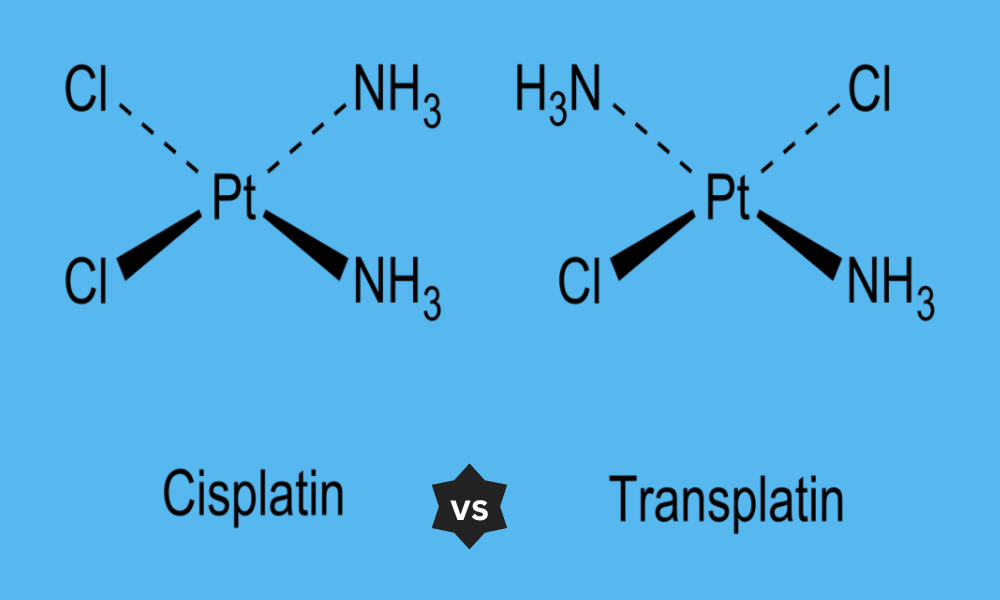Enzymes are catalysts in biology that speed up chemical reactions and play an essential role in a variety of biochemical processes that occur in living organisms. Of these enzymes, Alpha-Amylase, as well as Alpha-Glucosidase, are notable due to their vital role in carbohydrate digestion as well as metabolism.
Both enzymes aid in the breakdown of sugar complexes, and each has distinct properties and mechanisms of action and biological functions. This article aims to clarify the distinctions between Alpha-Amylase and Alpha-Glucosidase. It will also provide information on their biological importance and their various uses.
What is Alpha-Amylase?
Alpha-amylase is a kind of enzyme that plays a crucial role in the hydrolysis of internal alpha-1,4-glycosidic links in starch, which is a complex carbohydrate found in many foods, including grains and potatoes. The enzyme transforms the starch into simpler sugars such as maltose and oligosaccharides.
This facilitates the first stage of carbohydrate digestion in living organisms. Alpha-amylase is primarily found in the salivary glands of humans as well as the pancreas. However, it can also be found in many other organisms such as plants and microbes.
The enzyme functions as an endo-enzyme. It is able to break internal bonds within the starch molecule, and randomly hydrolyze glycosidic linkages. This mechanism allows for the rapid breaking down of massive insoluble starch molecules to sugars that dissolve in water and are then processed further by various enzymes or taken up by digestion.
All in all, Alpha-Amylase is vital in the digestion process and is used extensively in a myriad of industrial applications like distilling brewing, and the textile industry.

What is Alpha-Glucosidase?
Alpha-glucosidase is a protein that is primarily found in the membrane of the border of the intestinal brush but it can also be located in other tissues. It is a key component in the last steps of the digestion of carbohydrates, particularly by hydrolyzing terminal alpha-1,4-linked glucose residues in order to release individual glucose molecules.
In contrast to Alpha-Amylase, which functions as an endo-enzyme that breaks internal bonds within starch molecules, Alpha-Glucosidase functions as an exo-enzyme. It works at the ends of carbohydrates by cleaving each glucose unit one at a. The glucose molecules that are released are then ready to be absorbed into the bloodstream, affecting the blood sugar level.
In medical situations the inhibitors of Alpha-Glucosidase like Acarbose are frequently used to treat ailments such as Type 2 diabetes by slowing the digestion of carbohydrates and consequently, the rate at which glucose is absorbed.
Beyond its biological function, The Alpha-Glucosidase enzyme is also employed in a variety of industrial applications, including in the manufacture of sugar-free food products and for the research of carbohydrate structure.
In short, Alpha-Glucosidase functions as a crucial enzyme during the last stage of carbohydrate digestion. It acts on smaller oligosaccharides and disaccharides to create glucose that is readily consumed by the body.

Comparison Table of Alpha-Amylase and Alpha-Glucosidase
| Feature | Alpha-Amylase | Alpha-Glucosidase |
|---|---|---|
| Location | Saliva, Pancreas | Intestinal Brush Border |
| Substrate | Starch | Terminal non-reducing alpha-1,4-linked glucose residues, oligosaccharides, disaccharides |
| Type of Reaction | Hydrolysis of internal alpha-1,4-glycosidic linkages | Hydrolysis of terminal alpha-1,4-glycosidic linkages |
| Products | Maltose, Oligosaccharides | Glucose |
| Mechanism | Endo-enzyme (cleaves internal bonds) | Exo-enzyme (cleaves terminal bonds) |
| Biological Role | Initial carbohydrate digestion plant germination | Final carbohydrate digestion blood sugar regulation |
| Industrial Use | Brewing, Distilling, Textile Industry | Sugar-free food production, Carbohydrate structure study |
| Common Inhibitors | Tris, EDTA | Acarbose, Miglitol |
This comparison table provides an overview of the key features, functions, and applications of Alpha-Amylase and Alpha-Glucosidase, two enzymes essential for carbohydrate digestion but distinct in their roles and mechanisms.
Importance of enzymes in biochemical processes
Enzymes are essential in biochemical processes due to a variety of main reasons:
1. Acceleration of Chemical Reactions:
Enzymes act as catalysts in biological systems which speed up chemical reactions that otherwise are too slow for them to be sustained. They do this by reducing the energy needed for a reaction to take place.
2. Specificity:
The enzymes are extremely specific, which means they typically are able to catalyze just one kind of reaction. This guarantees that only the desired reactions occur within cells, ensuring the order and efficiency of metabolic pathways.
3. Regulation:
The regulation of enzymes can be accomplished through different mechanisms, such as covalent modification, allosteric control, and the availability of substrates. Cells can control biochemical pathways precisely and adapt to the changing environment.
4. Energy Efficiency:
By reducing the energy of activation and speeding up reaction enzymes can enhance biochemical processes by making them more efficient. This is essential in order for organisms to obtain the most energy-efficient use from the food they consume.
5. Facilitation of Complex Pathways:
A variety of biochemical pathways require several stages. Enzymes help ensure that these reactions take place in the right sequence and at the appropriate pace, thus enabling intricate biological processes such as DNA replication, cell respiration, and metabolism of nutrients.
6. Environmental Adaptation:
Certain enzymes are able to adapt or adapt to perform under extreme conditions such as extreme salinity, acidity, or temperatures, allowing organisms live in a variety of conditions.
7. Signal Transduction:
Kinases and phosphatases play a crucial role in signal transduction pathways helping cells respond to external stimuli and make swift changes to their functions.
8. Homeostasis:
They are essential to maintaining the balance of an organism’s internal system. For instance, enzymes in the liver help detoxify poisons and substances as well as enzymes found within digestion break food down into digestible nutrients.
9. Biotechnological and Industrial Applications:
Beyond their basic biological functions Enzymes have important applications in a variety of industries, such as medicine, food as well as biofuels. They are often providing sustainable or more efficient alternatives to chemical processes.
In the end, they are the heartbeat of biological systems. They’re essential for almost every biochemical process that takes place inside living cells. They are vital to living as we know it and are the catalysts for a wide range of chemical reactions supporting development, manufacturing of energy, and repair and adaption.
Hydrolysis of starch into maltose and maltotriose
The hydrolysis of maltose from starch, and maltotriose is one of the most important steps in the digestion of carbohydrates, which is primarily supported by the enzyme known as alpha-amylase.
Here’s a more in-depth description of this procedure:
- Starch’s structure: The starch complex carbohydrate is comprised of glucose molecules joined together. It is available in two major forms: amylopectin and amylose. Amylose is an elliptical string made up of glucose molecules that are linked with glycosidic bonds of alpha-1,4. Amylopectin is a branched structural that has both alpha-1 and alpha-1 glycosidic bonds.
- Alpha-Amylase Activity: Alpha-amylase acts as an enzyme that is secreted by salivary glands as well as the pancreas. When you eat starchy food like rice or bread the salivary alpha-amylase begins breaking down the starch inside the mouth into smaller pieces. The process continues in the small intestine where pancreatic beta-amylase continues to hydrolyze the starch.
- Hydrolysis Reaction: Alpha-amylase catalyzes hydrolysis of the glycosidic alpha-1 bonds that make up starch molecules. It randomly breaks these bonds and produces smaller pieces of starch referred to as dextrins. Dextrins are short chains of glucose molecules.
- Maltose as well as Maltotriose Formation: Alpha-amylase continues to degrade dextrins it will eventually produce two major items: maltose and maltotriose. Maltose is a disaccharide that consists of two molecules of glucose joined through an alpha-1,4 glycosidic link. Maltotriose is a trisaccharide made up of three molecules of glucose that are linked similarly.
- The importance of HTML0 for digestion: Maltose and Maltotriose are both smaller and more easily digestible than bigger starch molecules. They are further broken into smaller glucose molecules through another enzyme, called alpha-glucosidase. This is found within the brush area of the small intestine.
- absorption: Glucose which is the final product of the process of digestion is absorbed by the intestinal wall and into the bloodstream. This glucose is an easily accessible source of energy to the cells of the body.
The hydrolysis process from starch to maltose, and maltotriose is an essential step in the digestion of carbohydrates. It permits complex starch molecules to be broken into smaller, more digestible parts that can then be further processed to create individual glucose molecules to be absorbed and utilized for energy.
Alpha-amylase plays an essential role in the beginning of this process which is closely followed by the actions of alpha-glucosidase in converting disaccharides to glucose for absorption.
Effects of temperature on enzyme function
The effect that temperature has on enzyme functions is substantial and can be analyzed through an understanding of the term enzyme Kinetics. The enzymes are biochemical catalysts that facilitate chemical reactions within living organisms.
Their function is affected by a variety of environmental conditions, including temperature.
Here’s how temperature affects enzyme functions:
- Maximum Temperature: The enzymes have an ideal temperature at which they can function optimally. This temperature is unique to each enzyme but generally corresponds to the biological temperature of the body. Human enzymes have an ideal temperature is usually about 37degC (98.6degF).
- Kinetic Energy: The temperature affects molecular kinetic energies, such as substrates and enzymes. When temperatures rise molecules increase their kinetic energy and cause more frequent and intense collisions between the substrate and enzyme. This typically increases the rate of enzyme reactions.
- Reaction Speed: At temperatures that are lower than the ideal temperature, the speed of interactions between enzymes and substrates, and consequently the rate of reaction are less. When temperatures increase towards the optimal temperature the reaction rate rises due to the higher kinetic energy and rate of collisions that are successful.
- Denaturation: But at temperatures that are higher than the ideal range the increased energetic kinetic energy could result in negative effects. Proteins are proteins and extreme heat can cause the protein’s structure to break down or denature. This causes disruption to the enzyme’s active location in which catalysis and substrate binding take place, making the enzyme useless.
- The effect of denaturation: Denaturation causes an increase in enzyme activity and a decrease in reaction speed. The enzyme might be unable to catalyze the reaction completely. In extreme circumstances, the enzyme may undergo irreversible deaturation making the enzyme inactive forever.
- Curve of Activity of Enzymes and. Temperature: The relationship between the activity of enzymes and temperature usually follows an arc of bells. When temperatures rise from low levels the enzyme activity rises. But, when the optimal temperature is attained and denaturation starts the enzyme activity decreases dramatically.
- adaptation to the environment: Some species are equipped with enzymes that can perform in extreme temperatures, like the ones that are found in hot springs and the deep sea hydrothermal vents. Extremophiles possess enzymes that operate at optimal temperatures far beyond or below the normal range of the majority of species.
- Thermostability: Enzymes that have greater thermostability are able to withstand higher temperatures before reducing. This feature is important in a variety of industrial processes like baking, brewing as well as genetic engineering.
The temperature plays an important part in the functioning of enzymes. It influences the speed of enzyme reactions by its effect on the energy of kinetic molecules. While the optimal temperature enhances enzyme activity, extreme temperatures may cause a decrease in activity and denature.
Understanding the relationship between temperature and enzymes is crucial for a variety of fields like medicine, biology, and biotechnology.
Inhibition of alpha-glucosidase in diabetes treatment
Inhibition of alpha-glucosidase is a treatment option that is used to treat Type 2 Diabetes. Alpha-glucosidase inhibitors (AGIs) are drugs that block and target the enzyme alpha-glucosidase. It plays an important role in the digestion of carbohydrates by converting complex carbohydrates into sugars that are simpler.
Blocking this enzyme and removing glucose in the digestive tract slows down, resulting in better blood sugar control following meals.
Here’s how the inhibition of alpha-glucosidase is used in the treatment of diabetes:
- Mechanism of action: Alpha-glucosidase inhibitors function predominantly within the intestines of small size. If they are taken prior to eating the medications block alpha-glucosidase enzymes that are located in the brush edge of the mucosa of the intestine. This blockage prevents the conversion of more complex carbohydrates (such as disaccharides and starch) in glucose.
- Delayed carbohydrate absorption: By slowing down the metabolism of complex carbohydrates AGIs can slow the absorption of glucose from the bloodstream. This leads to a more gradual and smoother rise of blood sugar levels following meals.
- Postprandial Control of Glucose: One of the primary advantages of AGIs is their capacity to lower the postprandial (after-meal) excessive glycemia. Elevated blood sugar levels after meals are common with diabetes, and reducing the spikes in blood sugar is vital to overall glycemic management.
- Reduced Glycemic VariabilityAGIs may help lower the variation in blood sugar levels throughout the day. This can lead to better general management of diabetes and decrease the chance of complications that can arise from fluctuations in blood sugar levels.
- Lower insulin demand: By reducing postprandial hyperglycemia, AGIs may aid in reducing the need for insulin, particularly for those suffering from type 2 diabetes who make some insulin on their own. This is especially beneficial for those who are insulin-resistant or who have trouble managing their blood sugar levels using other methods.
- Potential side effects: Although alpha-glucosidase inhibitors are generally tolerated, they may cause digestive adverse effects like gas and bloating as well as diarrhea. These side effects result from unabsorbed carbohydrates reaching the colon, and then being processed by gut bacteria.
- Treatment Combination: Alpha-glucosidase inhibitors are commonly used in conjunction with other diabetes drugs, such as insulin or metformin to ensure the best glycemic control. Combining various classes of drugs will target various aspects of the diabetes pathophysiology.
- Lifestyle Assistance: AGIs are generally prescribed in conjunction with lifestyle and dietary adjustments. The patients are advised to consume carbs in a controlled fashion to reduce the risk of gastrointestinal side consequences and increase the effectiveness of the treatment.
It is clear that inhibition of alpha-glucosidase is an approach to pharmacologically manage postprandial hyperglycemia that is common in the type 2 form of diabetes. By reducing the digesting and absorption process of carbs, alpha-glucosidase inhibitors aid in regulating blood sugar levels and decrease the risk of complications with diabetes.
It is important for people suffering from diabetes to cooperate with medical professionals to establish the best treatment strategy, taking into consideration aspects like their overall health, medication interactions, as well as their individual response to treatment.
Contributions to overall carbohydrate digestion
Alpha-amylase as well as alpha-glucosidase are the two major enzymes that play a role in the digestion of carbohydrates within our digestive tract. Each enzyme plays an important function in the breakdown of complex carbohydrates into simpler sugars which are absorbed and utilized to generate energy.
Here’s how they help digestion of carbohydrate:
- Alpha-Amylase:
- Role: Alpha-amylase plays a role in breaking down complex and massive carbohydrates, including glycogen and starch, into smaller chains of glucose molecules.
- Location: Alpha-amylase is produced by salivary glands as well as the pancreas.
- Initialization of Digestive Process: The process starts in the mouth, and salivary alpha-amylase gets released while chewing. This enzyme begins to hydrolyze starch into smaller chains of maltose, glucose, and maltotriose.
- The Continuation of the Small Intestine: In the small intestine the pancreatic alpha-amylase continues the process of digestion by breaking down leftover starch molecules into smaller pieces.
- Products: The products that are the end result of alpha-amylase activities include maltose, maltotriose, and glucose short chains known as dextrins.
- Alpha-Glucosidase:
- Role Alpha-glucosidase’s role is to break down disaccharides as well as oligosaccharides to form glucose molecules.
- Location Alpha-glucosidase is situated in the brush border of the small intestine.
- Final Stages of Digestion After alpha-amylase breaks smaller carbohydrates into maltose maltotriose and dextrins alpha-glucosidase is the enzyme that hydrolyzes these molecules into a variety of glucose units.
- Absorption The glucose molecules created by alpha-glucosidase are tiny enough to pass through the intestinal wall into the bloodstream. They are then transferred to cells throughout the body for energy.
All-Inclusive Contribution The functions of alpha-amylase as well as alpha-glucosidase are interdependent and essential for the complete processing and digestion of carbohydrates.
- Alpha-amylase is responsible for breaking down complicated carbohydrates into smaller pieces Alpha-glucosidase then completes the process by turning the fragments into glucose molecules.
- This enzymatic process assures the breakdown of carbohydrates into a form that can be efficiently absorbed to the benefit of your body.
- If these enzymes were not present, our body could struggle to get the energy of complex carbs, which could lead to nutritional deficiencies and imbalances in energy.
In short, alpha-amylase and alpha-glucosidase are both involved in breaking complex carbohydrates in glucose molecules, which can then be taken in and utilized for energy. Their synergistic action is vital to ensure proper digestion of carbohydrates and the utilization of nutrients within the body.
Reference Books
Certainly, here are some reference books that you can explore to learn more about enzymes, carbohydrate digestion, and related topics:
- “Lehninger Principles of Biochemistry” by David L. Nelson and Michael M. Cox
- This widely used textbook provides a comprehensive introduction to biochemistry, including chapters on enzymes, carbohydrate metabolism, and digestion.
- “Biochemistry” by Jeremy M. Berg, John L. Tymoczko, and Lubert Stryer
- Another highly regarded biochemistry textbook that covers a range of topics, including enzyme function, carbohydrate metabolism, and the molecular basis of digestion.
- “Enzymes: Biochemistry, Biotechnology, Clinical Chemistry” by Trevor Palmer
- This book focuses specifically on enzymes, discussing their structure, function, and applications in various fields including biotechnology and clinical chemistry.
- “Carbohydrates: Structure and Function” by Philip L. Yeagle
- For a deeper understanding of carbohydrates and their importance in biological systems, this book covers the structural aspects of carbohydrates and their functions in detail.
- “Medical Biochemistry” by John Baynes and Marek Dominiczak
- This textbook delves into the biochemical aspects of human health and disease, including chapters on enzymes, digestion, and metabolism.
Conclusion
Enzymes are crucial biological catalysts that play an essential role in the effective digestion and utilization of carbohydrates. In particular, alpha-amylase is responsible for the process of converting complicated carbohydrates to simpler sugars, such as maltose or maltotriose. alpha-glucosidase is able to break down these sugars into glucose molecules.
This coordinated enzyme activity is responsible for the efficient absorption and digestion of carbohydrates and provides the body with an essential energy source.
Understanding the roles of these enzymes can shed light on the intricate mechanisms that provide our energy requirements and emphasize their importance in maintaining our overall health.







